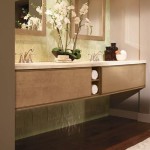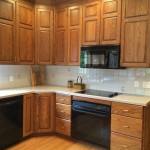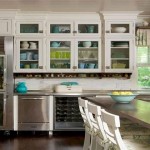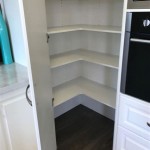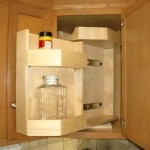List Of Kitchen Cabinet Knob Placement 2024
The placement of cabinet knobs is a critical element in kitchen design, affecting both the functionality and aesthetic appeal of the space. Proper knob placement ensures ease of use, prevents damage to cabinet surfaces, and contributes to a cohesive visual style. As we move into 2024, understanding the established guidelines and emerging trends in knob placement is essential for homeowners, designers, and contractors alike. This article provides a comprehensive list of considerations and best practices for kitchen cabinet knob placement in the current year.
Cabinet hardware, including knobs, serves as a focal point, influencing the overall character of the kitchen. Incorrect placement can lead to an unbalanced or awkward appearance, detracting from the intended design. Furthermore, poorly positioned knobs can make cabinets difficult to open and close, potentially causing wear and tear on the cabinet doors and frames over time.
Therefore, a thoughtful approach to knob placement involves considering various factors, such as cabinet style, door size, user ergonomics, and overall kitchen aesthetic. This article will delve into the key considerations necessary for achieving optimal cabinet knob placement in a modern kitchen.
Standard Guidelines for Upper Cabinet Knob Placement
Upper cabinets, often referred to as wall cabinets, typically require a different approach to knob placement compared to lower cabinets. The generally accepted standard for upper cabinets involves placing the knob closer to the bottom corner of the door. This placement aligns with the natural reach and leverage point for opening the cabinet from a standing position. The following guidelines provide a more detailed explanation:
Distance from Corner: A common recommendation is to position the knob approximately 2.5 to 4 inches from the bottom corner of the cabinet door. This range provides a comfortable grip while maintaining a visually balanced appearance. The specific distance can be adjusted based on the size and style of the cabinet door. For larger upper cabinets, a slightly increased distance from the corner may be appropriate.
Door Style Considerations: The style of the cabinet door also plays a role in determining the ideal knob placement. For example, on a shaker-style cabinet door with a prominent frame, the knob is often centered on the bottom rail. This placement creates a clean and symmetrical look that complements the classic shaker design. Conversely, on a slab-style door, the knob placement is more flexible, allowing for greater customization based on personal preference and ergonomic considerations.
Orientation Specifics: For cabinets with a vertical orientation, the knob should be placed on the hinged side, opposite the way the door opens. This allows users to pull the door open with ease. The knob should still adhere to the distance from corner guidelines, but this configuration offers optimal ergonomic function.
Visual Symmetry: In kitchens with multiple upper cabinets, maintaining visual symmetry in knob placement is crucial for achieving a cohesive and aesthetically pleasing design. Consistent knob placement across all upper cabinets creates a sense of order and balance, preventing the kitchen from appearing cluttered or disorganized. This can be achieved through careful measuring and marking during installation.
Standard Guidelines for Lower Cabinet Knob Placement
Lower cabinet knob placement differs from upper cabinet placement due to the lower height and typically larger size of the doors and drawers. As with upper cabinets, ergonomic considerations are paramount. The following guidelines offer best practices for lower cabinet knob placement:
Distance from Corner: On lower cabinets, knobs are typically placed 2.5 to 4 inches from the top corner of the door. This placement mirrors the upper cabinet placement, creating a visual consistency throughout the kitchen. However, adjustments may be necessary based on the specific design of the lower cabinets.
Drawer Placement: Drawers present a slightly different challenge regarding knob placement. The size and function of the drawer often dictate the most appropriate location. For smaller drawers, a single knob centered horizontally is generally preferred. For wider drawers, two knobs may be necessary to provide adequate leverage and prevent racking or uneven opening.
Centering Knobs on Drawers: In cases where a single knob is used on a drawer, it is typically centered horizontally. Vertically, the knob can be positioned slightly above the center point to provide a more comfortable grip. This placement is particularly beneficial for drawers that are frequently used.
Double Knob Placement: When using two knobs on a drawer, the placement should be symmetrical, with each knob positioned approximately one-third of the way in from the outer edges of the drawer. This ensures balanced weight distribution and prevents the drawer from binding or tilting when opened. The vertical placement should also be consistent between the two knobs.
False Fronts: Lower cabinets often feature false drawer fronts, which are panels that resemble drawers but actually conceal a cabinet door. In these cases, the knob placement should mimic the placement on adjacent drawers to maintain a consistent visual appearance. This requires careful consideration and precise measurements to ensure a seamless integration.
Emerging Trends and Considerations for 2024
While established guidelines provide a solid foundation for cabinet knob placement, emerging trends and evolving design preferences are shaping the future of kitchen hardware. In 2024, several key considerations are influencing knob placement decisions:
Minimalist Design: The minimalist aesthetic continues to gain popularity, emphasizing clean lines, simplicity, and uncluttered surfaces. In this context, knob placement tends to be more subtle and streamlined. Smaller, less ornate knobs are often preferred, and their placement is carefully considered to minimize visual impact while maintaining functionality.
Modern and Contemporary Kitchens: In modern and contemporary kitchens, the trend is towards clean lines and streamlined appearances. This aesthetic often favors the use of pulls over knobs, especially on larger doors and drawers. When knobs are used, they are typically simple, geometric shapes in finishes like brushed nickel, matte black, or stainless steel.
Ergonomic Design: Ergonomics is increasingly important in kitchen design, with a focus on creating spaces that are comfortable and accessible for users of all ages and abilities. This translates to knob placement that considers the user's height, reach, and grip strength. For example, placing knobs slightly higher on lower cabinets can make them easier to reach for individuals with limited mobility.
Mixing Hardware Styles: Mixing and matching hardware styles, including knobs and pulls, is becoming more common in contemporary kitchen design. This approach allows for greater personalization and creates a more dynamic and visually interesting space. For example, knobs might be used on upper cabinets while pulls are used on lower cabinets, or different finishes might be combined to create contrast and visual interest.
Touch Latch Systems: A growing trend in modern kitchen design involves the use of touch latch systems, which eliminate the need for traditional knobs or pulls. These systems allow cabinets and drawers to be opened with a simple push, creating a seamless and handle-free appearance. While touch latch systems offer a sleek and minimalist aesthetic, they may not be suitable for all users or all kitchen styles.
Handleless Cabinets: A more subtle alternative to touch-latch systems are handleless cabinets. These are installed with an opening on the top of the cabinet door, allowing you to grip the door and open it. This creates a seamless and minimalist look while still avoiding costly mechanisms within the cabinet door itself.
Ultimately, the optimal knob placement depends on a combination of factors, including cabinet style, door size, user ergonomics, and personal preference. By considering these factors and following the guidelines outlined in this article, homeowners, designers, and contractors can achieve a kitchen design that is both functional and aesthetically pleasing.
Furthermore, careful consideration of these factors contributes to the longevity and usability of the kitchen. Properly placed knobs prevent damage to cabinets that could occur from users having to force open doors because the hardware is inconveniently located or incorrectly installed.
The evolution of kitchen design continues to present new options and challenges in cabinet hardware placement. Staying informed about current trends and best practices allows for informed decisions that elevate both form and function in the heart of the home.

Cabinet Hardware Placement Guide

Cabinet Hardware Trends For 2024 Hottest Ideas

Cabinet Door Hardware Placement Guidelines Taylorcraft Company

Cabinet Hardware Placement Guide

Cabinet Hardware Placement Guide For Shaker Cabinets

Cabinet Hardware Placement Guide For Shaker Cabinets

Cabinet Hardware Placement Guide

Cabinet Hardware Placement Guide

Cabinet Hardware Placement Guide

Cabinet Hardware Placement Guide For Shaker Cabinets
Related Posts


